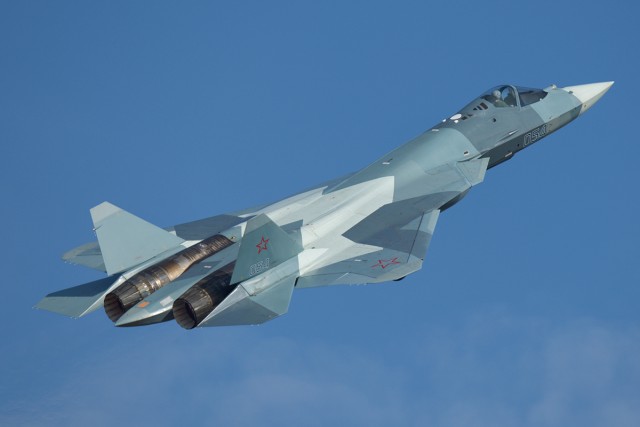
One of at least three Sukhoi T-50s climbing as part of a flight demonstration – Photo: Bernie Leighton | AirlineReporter
Every two years, the Russian government hosts the MAKS Aviasalon to showcase to the world the best and brightest of the country’s aerospace industry. I was able to attend the trade days, which are reserved for industry officials and foreign delegations to observe, try out, and negotiate sales of various aircraft, systems, and armaments in a unique environment. After three days, the business events of MAKS 2015 had concluded, and the results were pretty lackluster in terms of orders.
The show did not disappoint, however. With a large range of aircraft on static display, including examples of the Russian armed forces’ latest and greatest in their inventory, as well as multiple examples from Rostvertol, two Sukhoi Superjets, a Tupolev Tu-204C, and more, the show was sure to impress any AvGeek.
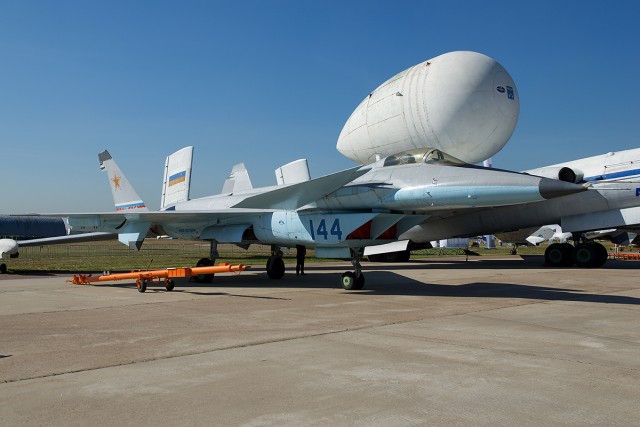
The Mikoyan MiG 1.44 technology demonstrator was displayed for the first time – Photo: Bernie Leighton | AirlineReporter
One of the highlights of the show was the public debut of three types that have never been displayed previously. These were the new navalised version of the Kamov Ka-52, the Ka-52K, and two older aircraft: The hydrogen-fueled Tupolev Tu-155, and the Mikoyan MiG 1.44.
Both of the older aircraft were a bit special. The Tu-155 was a highly-modified version of the Tu-154, with one of its engines replaced with a hydrogen-fueled experimental engine. The Mikoyan MiG 1.44 was an attempt at a fifth-generation fighter by MiG, and it only flew three or four times prior to being grounded due to funding and government disinterest in the late 1990’s.
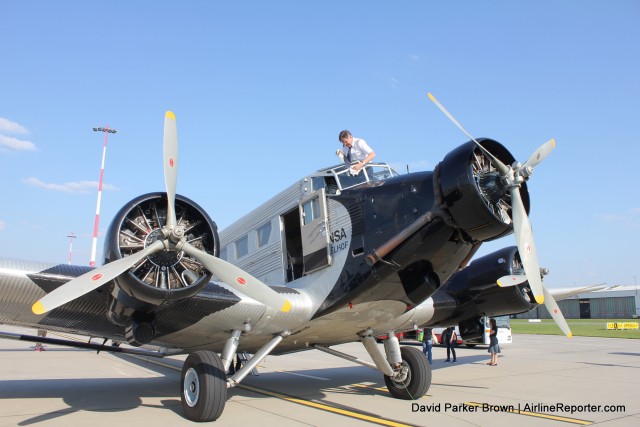
One of the pilots cleans the windshield of this three-engined beauty
When I got the invite to head to Hamburg for a few days to check out Lufthansa Technik, I was interested. When I saw that part of the trip involved flying on a Junkers Ju-52 that was built in 1936… I was sold.
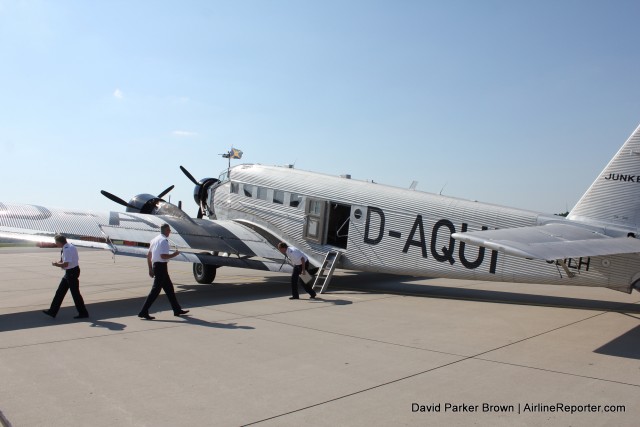
The Lufthansa Ju-52 sits at Hamburg Airport
Over the years, I have been able to fly on many airliners, but most were built in my lifetime. I haven’t had the privilege on flying on any real classic aircraft like this, and given that it is a three-engined, well-maintained beast, I just couldn’t help but be giddy.
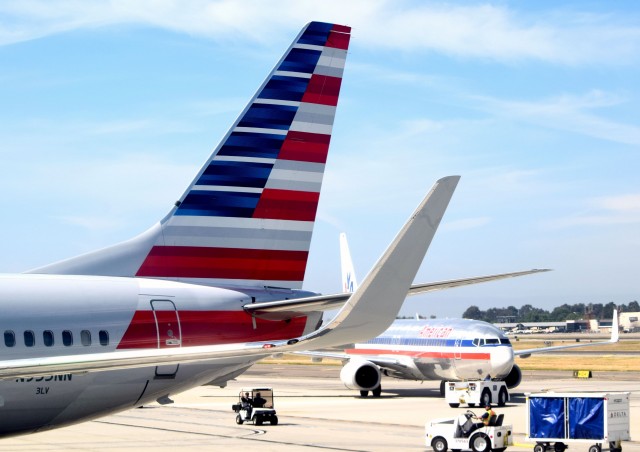
An American Airlines 737-800 parked at John Wayne Airport (SNA) with another preparing for departure – Photo: John Nguyen | AirlineReporter
A few days ago, I reported that American Airlines had seemingly opted to honor mistake fares purchased, after a currency conversion error resulted in pricing at a fraction of the actual cost. Unfortunately for some passengers, the airline has reversed their position and voided certain bookings it determined to be improper.
American previously issued a statement that it would, “honor mispriced fares that were booked last week in select international markets.” The airline also added, “We hope customers enjoy their experience with American and book with us again in the future.’
However, many customers logged into their accounts to find that their reservations were still canceled, even after their credit cards were charged and ticket numbers were issued. How did this happen? Did American backtrack?
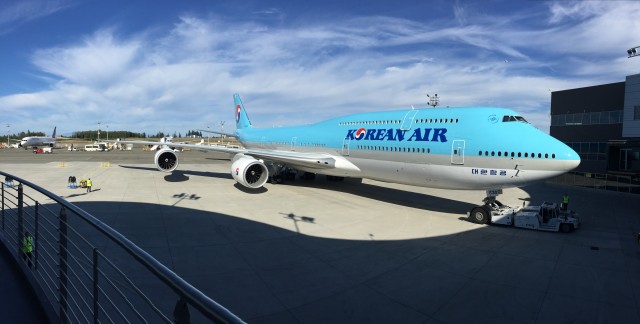
Korean Air’s new 747-8I glistening during delivery – Photo: Colin Cook | AirlineReporter
Earlier this week, at the Everett Delivery Center, Korean Air and Boeing celebrated delivery of the airline’s first of ten 747-8 Intercontinental aircraft. The delivery marked Korean becoming the only carrier of both the freighter and passenger variant, with Korean already operating seven freighters. We were invited to attend the delivery ceremony and it certainly did not disappoint.
Arriving about an hour prior to the ceremony beginning, I had the opportunity to do a little light plane spotting and to chat with some other members of the media. As you can imagine, security is tight at events like this and we had to go through a couple security checks. Once in the delivery center, I was allowed to step out onto the terrace to watch the big 747-8I be towed up to the Delivery Center. As the plane neared, the Korean Air pilots were also outside on the terrace with us. You could tell how excited they were to be a part of this event and to fly this beautiful plane home.
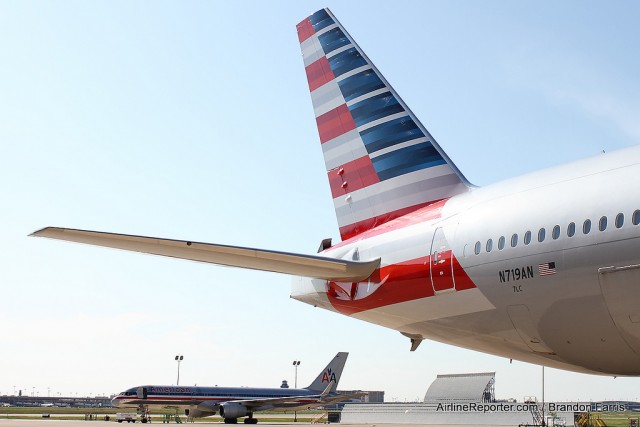
American made a mistake, but owned the mistake
NOTE: An update to this story has been posted on AirlineReporter.
Some customers found an unexpected and pleasant surprise last week while buying tickets online from American Airlines.
An apparent error on the airline’s website caused all published fares to be a mere fraction of normal prices for any ticket purchased. It is unknown how long the error had existed, but information about the mistake was posted early in the day last Thursday on Flyertalk, a popular website and online forum for the frequent flyer community.
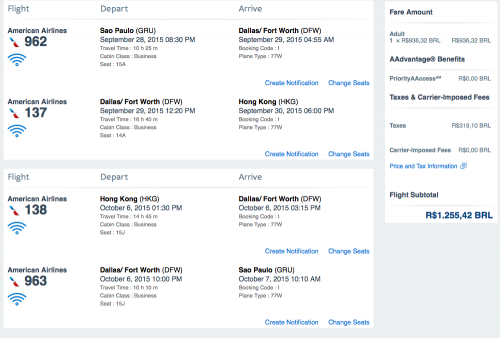
Screenshot image showing extremely low prices for airfare from Sao Paulo to Hong Kong – Image: flipside | Flyertalk
Flyertalk user flipside posted a screenshot image showing a round-trip business class ticket on American from Sao Paulo to Hong Kong that priced out to be R$1,255 Brazilian Reals (BRL), or approximately $350 US Dollars at today’s prevailing exchange rate. The normal fare for that business class ticket is approximately US$3,350 (R$12,000); the same ticket in coach is about US$850 (R$3,060). How could this sort of thing happen and, in cases like this, how would American respond?







